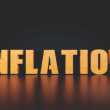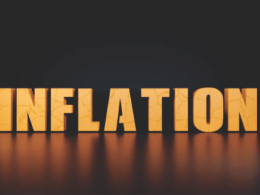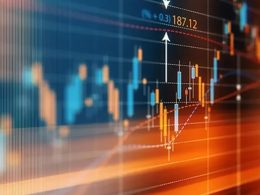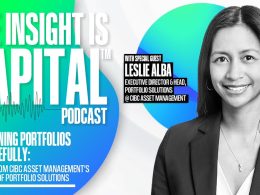March 9, 2012
by Liz Ann Sonders
Senior Vice President, Chief Investment Strategist, Charles Schwab & Co., Inc.
Brad Sorensen
CFA, Director of Market and Sector Analysis, Schwab Center for Financial Research
Michelle Gibley
CFA, Senior Market Analyst, Schwab Center for Financial Research
Key Points
- Market action has been relatively muted, notwithstanding the first 1% down day of this year. After the strong run to start the year, another pause or pullback would not be surprising but we continue to believe the upward trend will largely stay intact.
- Uncertainty abounds as to whether the Fed will unleash a new round of easing but liquidity remains abundant. Rhetoric continues in Washington but any substantial fiscal or tax policy action this year seems unlikely, despite the many challenges that are looming.
- Europe has stabilized somewhat but risks remain elevated. Meanwhile, central banks around the world are loosening monetary policy, which could bode well for emerging market stocks going forward.
NOTE: The next Schwab Market Perspective will be published one week later than normal-March 30, 2012.
Investor exhaustion, fatigue, disinterest? All phrases that have been tossed around to try to explain the recent plunge in both stock market volume and volatility. While it could be any or all of these, what’s more important is what the future holds. We’ve been noting for some time that a pullback in stocks wouldn’t be surprising given the impressive run we've seen since October along with some elevated measures of investor optimism (a contrarian indicator). As an example, the Crowd Sentiment Poll from Ned Davis Research shows optimism in the "excessive" zone; but given the recent sharp down day, it may help to reverse sentiment. But we’ll also note that a "correction" of sorts can also come through time, as stocks stay relatively flat, allowing sentiment to cool and economic and corporate data progress.
Potentially helping guard against a substantial, sustained pullback in stocks is the apparent lack of retail enthusiasm to this point despite the solid move. Individual investors remain hesitant to move sizable funds into equities.
Volume indicates lack of enthusiasm
Source: FactSet, Wall Street Journal. As of Mar. 5, 2012.
However, this could provide the fuel for further upward movement as investors grow weary of earning next to nothing in money markets and high quality fixed income. We continue to remind investors that the recent rally and current lull in trading volume should have little impact on investing, and that equities should be viewed as a long-term investment. Focus should remain on the appropriate allocations for an individuals risk tolerances, and adjustments to positions that may be inappropriate. However, the lack of volatility to start the year may be somewhat encouraging. According to Ned Davis Research, 2012 is the 9th year since 1928 without any 1% down days by the S&P 500 during the first 40 trading days of the year. During the previous eight instances, the median gain for the balance of the year was 19%, with only one instance of a negative return in the March through December time period.
We've been of the opinion that having a "wall of worry" to climb can also aid a market advance. Currently, oil prices appear to have taken the top spot on the wall as we’ve moved over $10 higher on West Texas Intermediate (WTI) crude since the beginning of February. Concerns are rising that higher fuel prices could derail the economic expansion. While possible, we believe that scenario is currently unlikely as the impact has been partially offset by the dramatic decrease in natural gas prices, while usage in the United States appears quicker than previous occasions to react to higher prices. There are additional offsets as well from improving employment and the fact that food prices are not rising commensurately. Neither was the case a year ago during the last major oil spike.
Americans are responding to higher gas prices
Source: FactSet, U.S. Dept. of Transportation. As of Mar. 5, 2012.
Additionally, there appears to be a relatively large speculative element involved in driving prices higher, which could be undone just as quickly should some of the current supply concerns (Iran, Sudan, etc) dissipate even a little. Read more about the oil situation in Liz Ann’s article "Black: Swans and Crude."
Gains are harder, but keep coming
As the economy continue to improve, comparisons get harder, making upside surprises less likely. We recently saw a disappointing fall in durable goods orders, but this data can be quite volatile on a month-to-month basis and February’s was likely impacted by the expiring tax incentives from 2011. Additionally, the Institute for Supply Management’s (ISM) Manufacturing Survey came in slightly below expectations at 52.4, but still indicates expansion. And regional manufacturing surveys continue to point to growth as the Chicago Purchasing Managers Index (PMI) reading of 60.2 was the best since March 2011; the Dallas Fed survey posted its best level since November 2010; and the Richmond Fed reading was the best since February 2011. We continue to believe that manufacturing activity is strong and will continue to contribute to the economic expansion in the coming months. Incidentally, the service side of the ledger improved to its best reading since February 2011 with the ISM Non-Manufacturing Survey coming in at 57.3.
Strong manufacturing has contributed to a nice improvement in the labor market, which has in turn contributed to an increase in consumer confidence, which recently posted its highest reading since February of 2011. However, we take consumer surveys with a grain of salt as what they say often doesn’t track with what they do.
The labor market is also improving as jobless claims continue to trend downward, now hovering around 350,000, well below the 400,000 level that is often viewed as critical. Additionally, the ADP employment report showed that 216,000 jobs were added to private payrolls, half of which were by small businesses. The Labor Department reported that February payrolls rose by 227,000, while previous months were revised up by 61,000, with the unemployment rate remaining at 8.3%. Also encouragingly, temporary employment, which tends to be a leading indicator of permanent hiring, increased by 45,000 in February, the most since November 2009.
Fed Hedge?
The Federal Reserve continues to maintain an extremely loose monetary policy, with short-term interest rates pegged near zero and the buying of longer-term Treasury securities continuing. This policy can help to support economic expansion, hence the popular phrase "don’t fight the Fed", but the impact of the easy monetary policy may be dissipating, and there are risks with holding this policy in place too long.
Fed Chairman Bernanke may have hedged a bit during his recent testimony before Congress as he appeared to downplay what seem to have become greater expectations of a new round of quantitative easing. While still on the table, the continued improvement in the economy may be at least slightly reducing the odds of a new program. Were a program to be announced (or hinted) it would likely be a form of "sterilized" quantitative easing, whereby the Fed would borrow back its Treasury purchases so as not to increase liquidity in the banking system. This would be to keep inflation concerns at bay even as they expand their balance sheet further. We remain hopeful they will not announce any new easing, regardless of whether it's sterilized.
Government in a holding pattern
Small steps are likely the rule for the rest of the year in Washington. With the elections looming in November, rhetoric and posturing will certainly heat up, but substantive action is highly unlikely. The recent extension of the payroll tax cuts is potentially the last piece of meaningful legislation that takes place on the financial side of the ledger until after the election. However, the challenges don't go away and with massive tax increases due to hit in 2013, with the expiration of the Bush-era tax cuts and the payroll tax cut, it will be interesting to watch if a lame duck Congress can come to an agreement to soften the blow following the election.
Europe dragging down global growth
Across the pond, The European Central Bank (ECB) has taken a creative approach to monetary stimulus via two unlimited offers of three-year loans to banks. The combined 1.019 trillion euros ($1.355 trillion) total for these three-year loans under the long-term refinancing operation (LTRO) has been credited with thwarting a banking system collapse. In conjunction with fiscal actions, contagion to the large debt markets of Spain and Italy in particular, appears to have lessened. The Greek debt swap hurdle has cleared and the second Greek bailout kicks the can down the road. We believe Greece’s debt load is likely unsustainable longer term given weak growth prospects, but the ability of Greece alone to sway markets has been diminished.
However, the injection of liquidity from the ECB’s LTROs is not pure monetary stimulus and is unlikely to substantially stimulate growth. In our opinion, the ECB is acting as a substitute for private investors, where capital markets were seizing up as a channel for raising money. While the likelihood of a severe credit crunch has been reduced, the lending outlook remains negative. European bank balance sheets still have insufficient capital to expand lending. Recent readings of both bank lending standards and money lent remain downbeat, constricting future economic growth.
A severe recession in Europe appears less likely, but we believe Europe’s economy will remain soft and is likely to continue to weigh on global growth.
Europe's economic drag
Source: FactSet, Bloomberg. As of Mar. 6, 2012.
As for the sovereign debt crisis, concerns could flare up again, because the situation in Italy or Spain could still deteriorate, and Portugal is likely to need either renegotiated terms on its first bailout or new aid. Additionally, the future viability of the broad eurozone fiscal pact could be threatened by resistance in France.
Central banks fighting the global growth slowdown
Looking back to 2010, emerging market economies were strong, including 10.4% growth in China, 7.6% in Brazil, and 10% in India. However, this strong growth created concerns about economies overheating. Emerging market central banks had to raise rates to slow things down, resulting in headwinds for both emerging market stocks and economic growth in developed economies.
In addition to emerging market tightening, growth began to slow in 2011 due to:
- The eurozone debt crisis (as described above)
- Fiscal spending drags globally
- Consumer spending crimped by inflation
- Lending restraint in China
A positive aspect of the slowdown is that inflation has turned and is now easing globally, notably in food prices. Emerging market consumers by definition have low income levels, and the basics such as food remain their most important purchase. Looking at consumer price inflation (CPI) measures, food is 8% of the US consumer’s basket, while 20-40% of emerging market consumer spending.
Food inflation is slowing
Source: FactSet, Commodity Research Bureau. As of Mar. 6, 2012.
Food prices have fallen because farmers planted more crops in response to higher prices last year and more favorable weather. While inflation could heat up in 2013 due to rising wages, the benefits from easing food prices for emerging markets could continue to play out through most of 2012. Combined with slower economic growth, emerging markets monetary policy has inflected. The "don’t fight the Fed" refrain can now be repeated for many central banks worldwide, and global economic growth could reaccelerate later in 2012.
Concern about the emerging market growth engine?
Recent emerging market headlines have caused some concerns, including Brazil reporting a 2.7% growth rate that was the slowest since 2003, and India’s growth of 6.1% that was the least since 2009. Capping it off was Chinese Premier Wen’s announcement at the National People’s Congress of a 7.5% growth target in 2012; lower than it’s been previously. Should we be concerned about losing the emerging market growth engine? We don’t think so.
We spend extra time examining China because it is now the second largest single-country economy behind the United States and has posted strong growth for quite some time. We recognize the limitations of a government-controlled economy, but note that China is able to quickly implement policy changes and has the wallet to do so.
In response to the 2008 global slowdown, China went on a lending binge. As we detailed in our China article, local government loans that funded infrastructure construction could result in future problems for Chinese banks. However, there are indications China has kicked the problem down the road by extending the deadlines for repayment. Meanwhile, the steep drop-off in infrastructure spending in 2011 has begun to improve, with banks resuming funding for reasonable projects.
We disagree with broad-based proclamations about too much infrastructure in China, as it appears relatively underdeveloped by some measures, particularly in the inland provinces. For example, BCA Research calculates that despite a tripling in highway miles over the past 15 years, the number of automobiles has jumped eight-fold.
We are surprised at the clamor about China lowering its growth target to 7.5% for 2012. China’s "Five Year Plan" for 2011-2016 released over a year ago targeted a 7% growth rate over the full period, as the government is transitioning the economy toward consumers. While a decade ago the government used 8% growth as the rule of thumb to create sufficient job growth, China may be able to accept a lower rate now. China's population is aging due to the one-child policy instituted nearly 40 years ago. In conjunction with the 7.5% growth target, Premier Wen noted that, "We will move faster to set up a permanent mechanism for boosting consumption." The Chinese consumer is a market that companies globally will likely increasingly target in the future.
Geopolitics the risk in 2012
Rising oil prices due to geopolitics in the Middle East is a key risk to the global economy. However, with oil and stock prices moving upward in tandem, the positive message from the market is that rising oil prices are due to an improving global economic outlook, and are not (yet) choking growth. It is also the case that the rate of change matters more than the level, and at least relative to last year’s spike, the growth rate is not yet high enough to trigger major economic concerns.
The economic tipping point for prices is likely higher than last year. The US jobs and lending picture has improved, eurozone sovereign risks have declined, and central banks are nearly uniformly easing, factors not in play a year ago. As a result, as Liz Ann describes in Black: Swans and Crude, rising oil prices are a risk but not necessarily the death knell for stocks or the economy.
Read more international research at www.schwab.com/oninternational.
Important Disclosures
The MSCI EAFE® Index (Europe, Australasia, Far East) is a free float-adjusted market capitalization index that is designed to measure developed market equity performance, excluding the United States and Canada. As of May 27, 2010, the MSCI EAFE Index consisted of the following 22 developed market country indexes: Australia, Austria, Belgium, Denmark, Finland, France, Germany, Greece, Hong Kong, Ireland, Israel, Italy, Japan, the Netherlands, New Zealand, Norway, Portugal, Singapore, Spain, Sweden, Switzerland and the United Kingdom.
The MSCI Emerging Markets IndexSM is a free float-adjusted market capitalization index that is designed to measure equity market performance in the global emerging markets. As of May 27, 2010, the MSCI Emerging Markets Index consisted of the following 21 emerging-market country indexes: Brazil, Chile, China, Colombia, the Czech Republic, Egypt, Hungary, India, Indonesia, Korea, Malaysia, Mexico, Morocco, Peru, Philippines, Poland, Russia, South Africa, Taiwan, Thailand and Turkey.
The S&P 500® index is an index of widely traded stocks.
Indexes are unmanaged, do not incur fees or expenses and cannot be invested in directly.
Past performance is no guarantee of future results.
Investing in sectors may involve a greater degree of risk than investments with broader diversification.
International investments are subject to additional risks such as currency fluctuations, political instability and the potential for illiquid markets. Investing in emerging markets can accentuate these risks.
The information contained herein is obtained from sources believed to be reliable, but its accuracy or completeness is not guaranteed. This report is for informational purposes only and is not a solicitation or a recommendation that any particular investor should purchase or sell any particular security. Schwab does not assess the suitability or the potential value of any particular investment. All expressions of opinions are subject to change without notice.
The Schwab Center for Financial Research is a division of Charles Schwab & Co., Inc.










